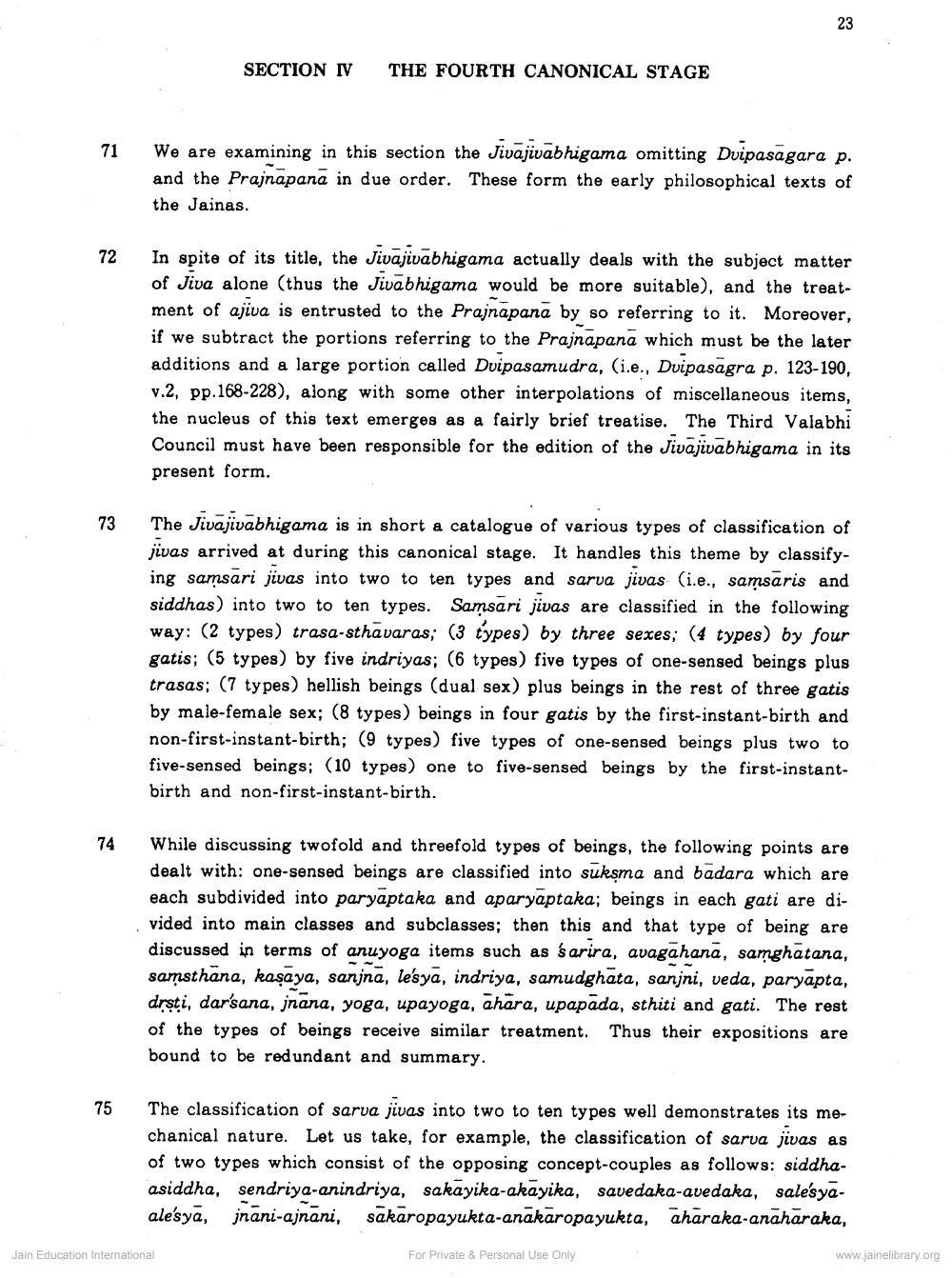________________
1
72
74
75
SECTION IV
THE FOURTH CANONICAL STAGE
We are examining in this section the Jivajivabhigama omitting Duipasagara p. and the Prajnapana in due order. These form the early philosophical texts of
the Jainas.
73 The Jivajivabhigama is in short a catalogue of various types of classification of jivas arrived at during this canonical stage. It handles this theme by classifying samsari jivas into two to ten types and sarva jivas (i.e., samsaris and siddhas) into two to ten types. Samsari jivas are classified in the following way: (2 types) trasa-sthavaras; (3 types) by three sexes; (4 types) by four gatis; (5 types) by five indriyas; (6 types) five types of one-sensed beings plus trasas; (7 types) hellish beings (dual sex) plus beings in the rest of three gatis by male-female sex; (8 types) beings in four gatis by the first-instant-birth and non-first-instant-birth; (9 types) five types of one-sensed beings plus two to five-sensed beings; (10 types) one to five-sensed beings by the first-instantbirth and non-first-instant-birth.
23
In spite of its title, the Jivajivabhigama actually deals with the subject matter of Jiva alone (thus the Jivabhigama would be more suitable), and the treatment of ajiua is entrusted to the Prajnapana by so referring to it. Moreover, if we subtract the portions referring to the Prajnapana which must be the later additions and a large portion called Dvipasamudra, (ie., Duipasagra p. 123-190, v.2, pp.168-228), along with some other interpolations of miscellaneous items, the nucleus of this text emerges as a fairly brief treatise. The Third Valabhi Council must have been responsible for the edition of the Jivajivabhigama in its present form.
Jain Education International
While discussing twofold and threefold types of beings, the following points are dealt with: one-sensed beings are classified into sukṣma and badara which are each subdivided into paryaptaka and aparyaptaka; beings in each gati are di vided into main classes and subclasses; then this and that type of being are discussed in terms of anuyoga items such as sarira, avagahana, samghatana, samsthana, kaşaya, sanjna, lesya, indriya, samudghata, sanjni, veda, paryapta, drati, darsana, jnana, yoga, upayoga, ahara, upapada, sthiti and gati. The rest of the types of beings receive similar treatment. Thus their expositions are bound to be redundant and summary.
The classification of sarva jivas into two to ten types well demonstrates its mechanical nature. Let us take, for example, the classification of sarva jivas as of two types which consist of the opposing concept-couples as follows: siddhaasiddha, sendriya-anindriya, sakayika-akayika, savedaka-avedaka, salesyaale'sya, inani-ajnani, sakaropayukta-anakaropayukta, aharaka-anaharaka,
For Private & Personal Use Only
www.jainelibrary.org




